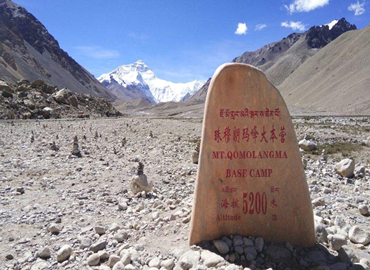Inside Tibet Train
- by Apple
- Last Updated: 2025-04-12
Tibet Train refers to trains to Lhasa passing by Xining City, Qinghai Province. At present, there are Tibet trains departing from Beijing, Shanghai, Guangzhou, Chengdu, Chongqing, Xián, and Lanzhou to Lhasa. Compared with ordinary trains, Tibet trains are more humanized and better adapted to the weather of the Tibetan Plateau. For example, there's an electronic board in every car for real-time notifying passengers of the temperature inside and outside of the train, the speed, the oxygen content of the air, and the altitude, etc. After the train enters the Tibetan Plateau, the oxygen content gets lower, the ultraviolet rays become intense, and the sandstorm gets stronger outside of the train. So, the trains on the Qinghai-Tibet Railway use double-glazed windows and anti-ultraviolet screen protectors to keep passengers comfortable.
Usually, there are 16 cars in a train, 2 soft-sleeper carriages and 8 hard-sleeper carriages. Besides those, the remaining cars are for hard seats and 1 dining car.
Tips to Board Tibet Trains
If it is your first time boarding a train to Lhasa, you will feel a bit at a loss as to what to do. Here are some tips that can guide you along the way:
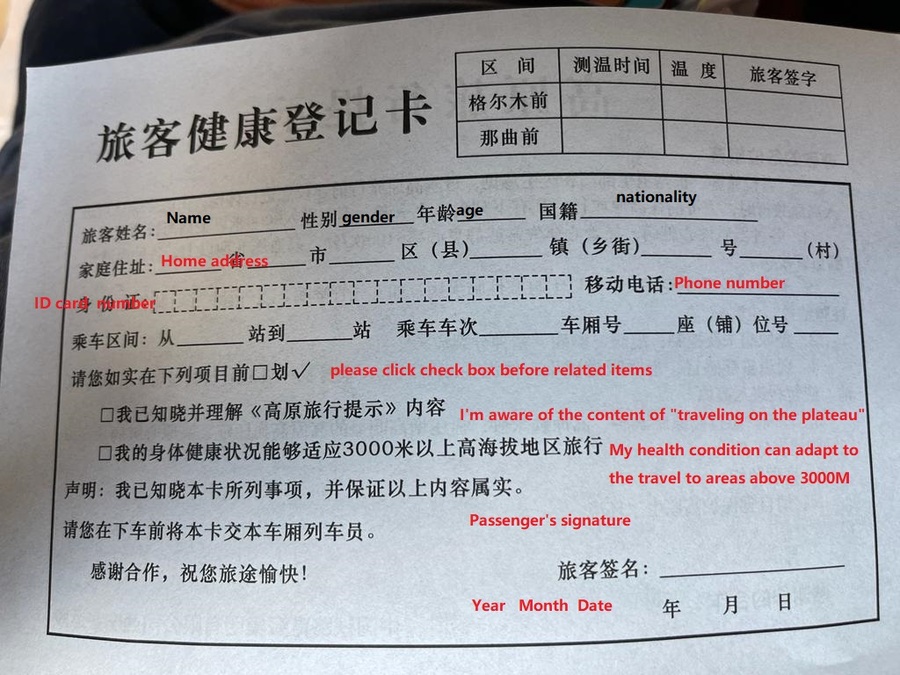
- Before you can enter the waiting hall, you will line up at the security counter to undergo the required security protocol. You will need to present your documents, like your passport, train ticket, and a copy of your Tibet Travel Permit. Your luggage will be scanned, and you will need to pass by the detector gate. You should also follow the railway station guidelines on things and substances that are prohibited inside the train.
- Once you have entered the station, you must find the designated waiting area for your train. Once you've found the right waiting place, you can check in 10 to 20 minutes before the departure of the train. The barriers are usually closed five minutes prior to the departure of the train.
- You will be properly guided to the right platform by an overhanging LED screen along the way. You simply need to follow the instructions. Before boarding the carriage, the conductor at the carriage gate will inspect your ticket to ensure that you are boarding the right train and carriage.
- After boarding the Tibet train (usually after passing through Xining), you will be required to fill out a Passenger Health Declaration Form. It's a kind of disclaimer that you are aware of the risk of traveling to the plateau and your health can adapt to the travel. In other words, passengers with illnesses like hypertension, chronic respiratory disease, stroke, and other cardiovascular diseases are not suggested to travel to Tibet.
Soft-Sleeper & Hard-Sleeper
There are three types of carriages on the Tibet train, and therefore, the tickets are divided into three types. Since the journey is really long, most international travelers prefer soft-sleepers. The soft-sleeper is always in huge demand, so you are advised to book it through a travel agency and make your booking earlier. Hard sleepers offer slightly less comfort but are suitable for budget-conscious travelers. Hard seats cannot be adjusted, and there's not enough legroom to stretch out, which can lead to discomfort over long periods—generally NOT recommended for travelers taking the train to Tibet.
- First Class: Soft-Sleeper Berth
- Second Class: Hard-Sleeper Berth
- Third Class: Hard-Seat
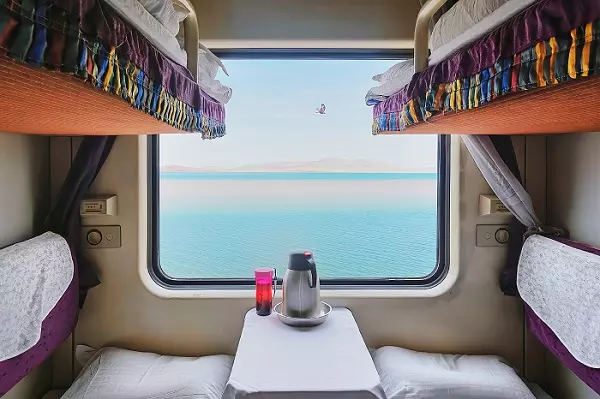
Soft-Sleeper Berth
The Soft-Sleeper Berth is the best carriage on the Tibet Train. Soft sleeper carriages come with four berths in each compartment, two uppers and two lower, with sheets, pillows, and blankets provided, including individual TVs, doors that close and lock, a small table, full-length mirrors, independent luggage storage space, a coat rack, and ladders.
Each train usually has 2 soft-sleeper carriages, with each carriage containing 9 compartments, each having 4 berths. This brings the total to 72 soft-sleeper berths on the train.
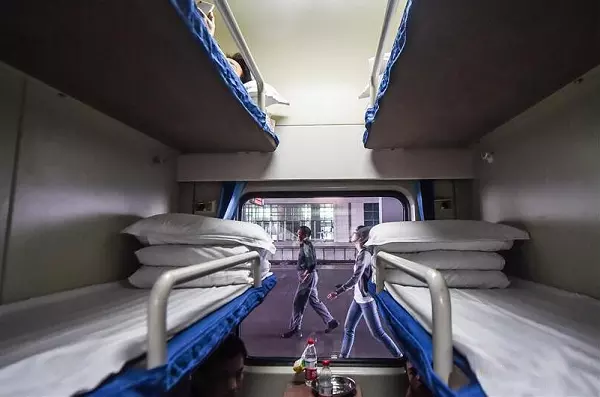
Hard-Sleeper Berth
The Hard-Sleeper Berth is the second class carriage of Tibet Train. Hard-sleeper carriages are made up of doorless 6-berth compartments with bunks in three tiers, with sheets, pillows, and blankets provided, as well as a small table and ladders.
Each train usually has 8 hard-sleeper carriages, with each carriage containing 11 compartments, each having 6 berths. This brings the total to 528 hard-sleeper berths on the train.
Toilet in Tibet Train
There are toilets available in each car of the Tibet Train. On one side is an Asian toilet, and on the other is a Western toilet. Overall they are kept clean but toilet paper is not available.
There are neat sink areas in the Tibet train. The conductors always keep the sink areas reasonably clean. Each sink area is equipped with three sinks that have push-type water faucets. The sink area is always very busy in the morning because it is shared by dozens of passengers. It is better to buy a face towel at a supermarket before you get on the train, for there are no toiletries on the Tibet train.
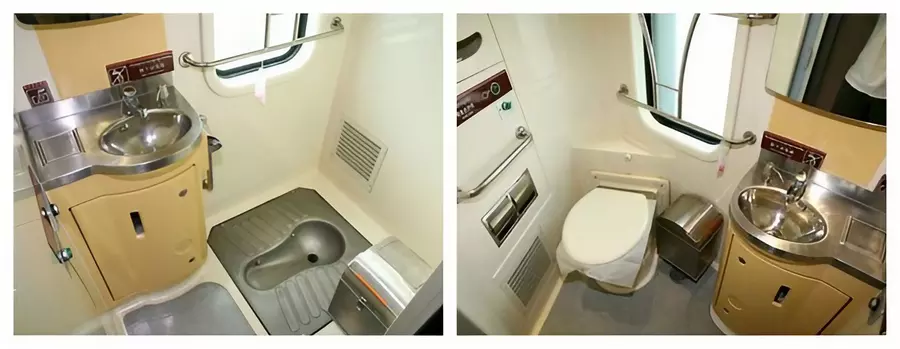
Dining Car in Tibet Train
A general cookhouse next to the soft sleeper is equipped with each Tibet train. The dining car in the Tibet train provides three meals a day for passengers on board. Besides the kitchen, there are tables and seats available in the dining area for you to enjoy the food as well as the view along the Qinghai-Tibet Railway. During non-meal service time, you will be required to buy at least one beverage to sit in the dining car of the Tibet train. Meals provided on the train are usually about twice the price than anywhere else in China.
For breakfast, passengers will be served with porridge, pickles, eggs, bread, and milk, which is about CNY 20 (USD 2.7) or so. Those who are in favor of noodles could choose from Pickled Cabbage Noodles, Beef Noodles, Tibetan Noodles, etc.
For lunch and dinner, Tibetan-style dishes are the most popular with passengers on the Tibet train. Among all the train meals, there are 55 cold dishes, 8 Tibetan dishes, 32 ordinary dishes, and 8 soup dishes. Usually about CNY 30 (USD 4.2) or so per dish. Also, there is a meal cart pushed throughout the train by attendants during mealtime, selling Chinese-style bento for about CNY 40 (USD 5.5).
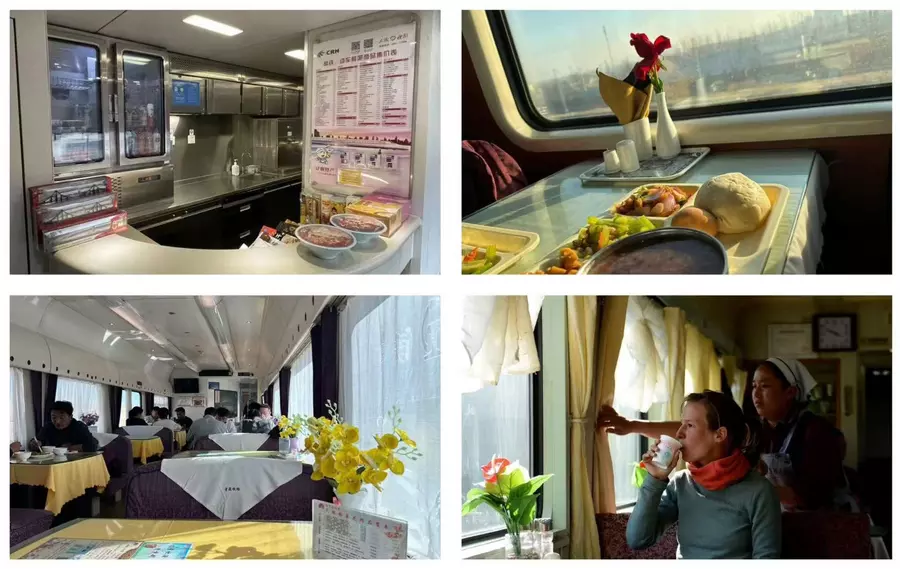
Air-conditioning System in Tibet Train
All Tibet trains are air-conditioned and pressurized as they travel through high-altitude mountain regions. The air conditioning system in the Tibet trains can keep the temperature on the train at a comfortable level so that passengers can enjoy the breathtaking scenery along the world's highest railway in a cozy environment. Of course, the other facilities, such as the oxygen supply system and the pressurize, also contribute to this comfortable environment.
Medical Service in Tibet Train
Tibet Trains provide passengers with temporary medical services. Professional doctors and trained nurses are also available on Tibet trains. Passengers can get timely but limited first aid on a Tibet train.
If you suffer from high-altitude sickness, you can ask the train attendant for help. The trained conductors will help you connect the oxygen tube to the oxygen outlet so you can inhale oxygen.
At present, two oxygen supply systems are used on Tibet trains: diffusion oxygen and pipe oxygen. One is used to increase the oxygen content inside the train when the train to Lhasa is driven into the plateau zone. The other is directly used by passengers through the independent port. There are oxygen supply tubes and oxygen masks in each cabin for an emergency.
When the Tibet Train heads its way up to Qinghai-Tibet Plateau Zone, Oxygen begins to emit to the whole cabin by temperature and air pressure controlling system; it mostly releases the symptoms of traveling at such a high altitude, like a headache, out of breath, insomnia, etc.
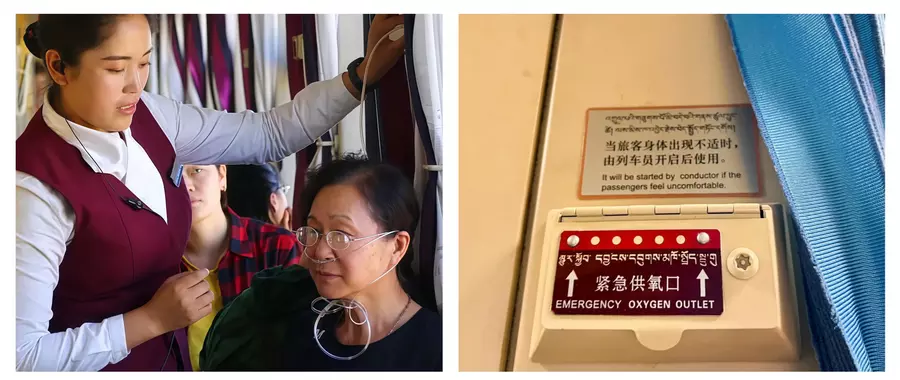
Private Oxygen masks are provided to every passenger, regardless of the type of ticket you have. In a sleeping berth carriage, you can find the Oxygen Supply tubes and mask on each cabin for an emergency.
The air pressure inside the train is automatically controlled to make you feel like you are traveling in a low-altitude zone. More than these conveniences, the glass window of the Tibet Train is designed to block anti-ultraviolet rays.
Conclusion
Traveling to Tibet by train is a unique and comfortable way to experience the breathtaking landscapes of the Tibetan Plateau. With thoughtful amenities like oxygen supply systems, UV-protected windows, and various sleeper options, the Tibet Train ensures a safe and pleasant journey to Lhasa—perfect for both first-time visitors and seasoned travelers.
Email response within 0.5~24 hours.





